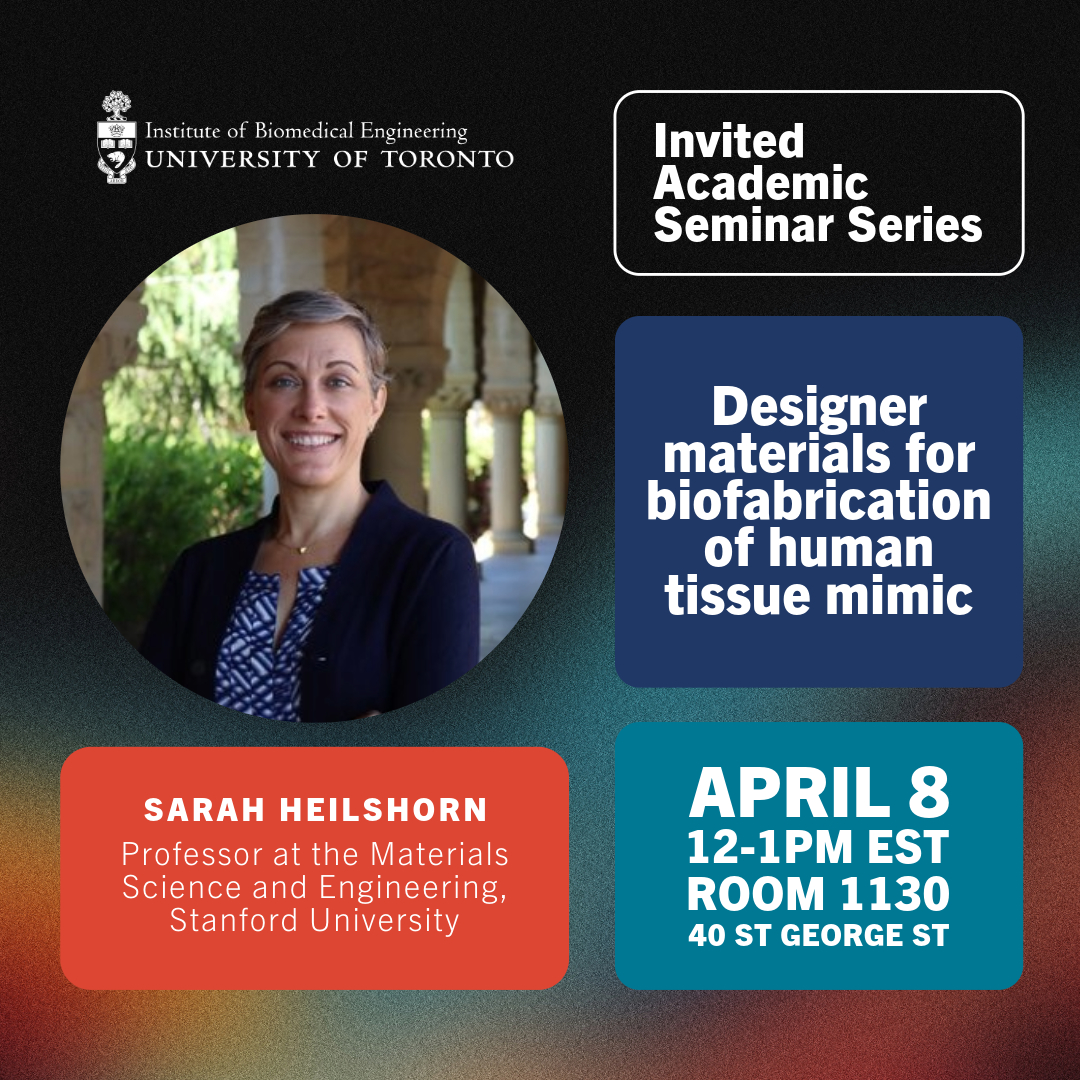
- This event has passed.
Designer materials for biofabrication of human tissue mimic – Sarah Heilshorn
April 8 @ 12:00 pm - 1:00 pm EDT

Speaker
Sarah Heilshorn
Professor
Materials Science and Engineering
Stanford University
Abstract
During development and disease, a cell’s behavior is directly influenced by its surrounding microenvironment. Thus, when designing patient-derived organoid models, ideally each tissue type would be cultured in its own customizable biomaterial that matches the specific developmental stage or disease state found in vivo. To fulfill this need, my lab designs bespoke biomaterials that can be tailored to fit a range of applications. In one demonstration, I present a family of dynamic biomaterials that support the growth of patient-derived pancreatic ductal adenocarcinoma (PDAC) organoids. Through control of the matrix, we find that PDAC becomes significantly more chemoresistant in response to mechanosignaling through CD44 receptors. Excitingly, this chemoresistance is reversible, with PDAC regaining sensitivity to frontline chemotherapy upon softening of the matrix. In a second example, I present a new “pick-and-place” 3D-bioprinting strategy for the spatial positioning of neural organoids within a dynamic support matrix. Using this method, we can fabricate large tissue structures composed of multiple organoids that fuse together. We demonstrate potential applications in the fabrication of neural “assembloids” composed of dorsal- and ventral-patterned neural organoids together with patient-derived brain cancer spheroids. We envision that these two technologies will be used together in the future to create personalized tissue models of individual patients.
Biography
Sarah Heilshorn is Professor and Associate Chair in the Materials Science & Engineering Department at Stanford University and the Director of the Geballe Laboratory for Advanced Materials, an independent research institute at Stanford. She holds courtesy faculty appointments in the Departments of Chemical Engineering and Bioengineering and is a Bass University Fellow in Undergraduate Education. Her laboratory integrates concepts from materials science and protein engineering to design new, bioinspired materials. These materials have applications in regenerative medicine, organoid culture, and 3D bioprinting. Prof. Heilshorn is a fervent supporter of diversifying the engineering community and serves in multiple leadership roles to help achieve this goal. She is a Fellow of the Royal Society of Chemistry and the American Institute for Medical and Biological Engineering. She currently serves as an Editor of Acta Biomaterialia and on the Board of Directors for the Tissue Engineering and Regenerative Medicine International Society (TERMIS).